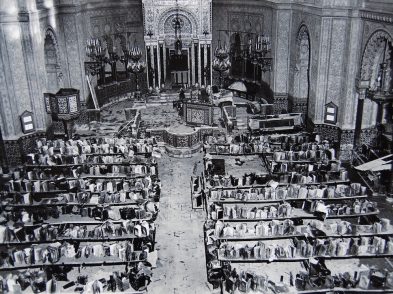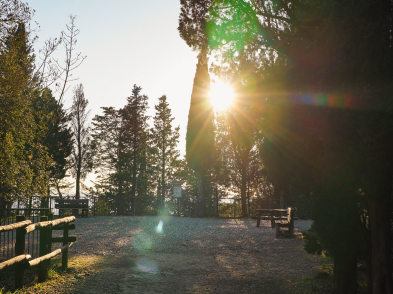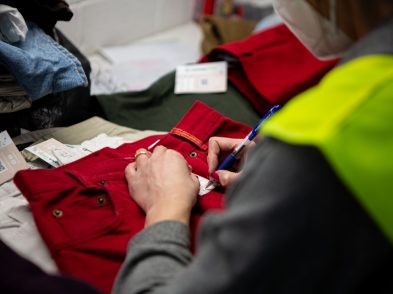What happens when you put two of the world’s most innovative thinkers about the nexus between architecture and plants together in a room? While working together on a forestation plan for the Tuscan city of Prato—the first Italian city to have one—Stefano Mancuso, biologist, and Stefano Boeri, architect, developed the concept and term “urban jungle” to represent how plants can change urban spaces and influence a happier and more sustainable way of life. This concept has been expanded into a 3.8-million euro, EU-funded project through the Urban Innovative Actions call, Prato Urban Jungle, that will see the “greening” of three pilot areas in the city. The project was recently presented at an event at Prato’s Centro Pecci.
With cities being home to a growing majority of the earth’s population, the urban jungle team sees plants as one half of the solution to the global warming crisis. While policies addressing better mobility, manufacturing and energy use are one step towards reducing carbon monoxide emissions, plants have the unique capacity of combating them on the ground.
View this post on Instagram
The current city layout sees green spaces separate from urban construction
Cities should no longer be separate from nature but impermeable to nature and plants,” says Mancuso. “Plants don’t belong just in parks, gardens… they should be everywhere in the city, wherever we can think of putting them.” This idea connects with Mancuso’s experiments with The Air Factory; The Florentine spoke with Stefano Mancuso last year about the prototype at Manifattura Tabacchi, where attractive tropical plants in a greenhouse-like window filter 5,000 cubic meters of air per hour in an ex-industrial space.
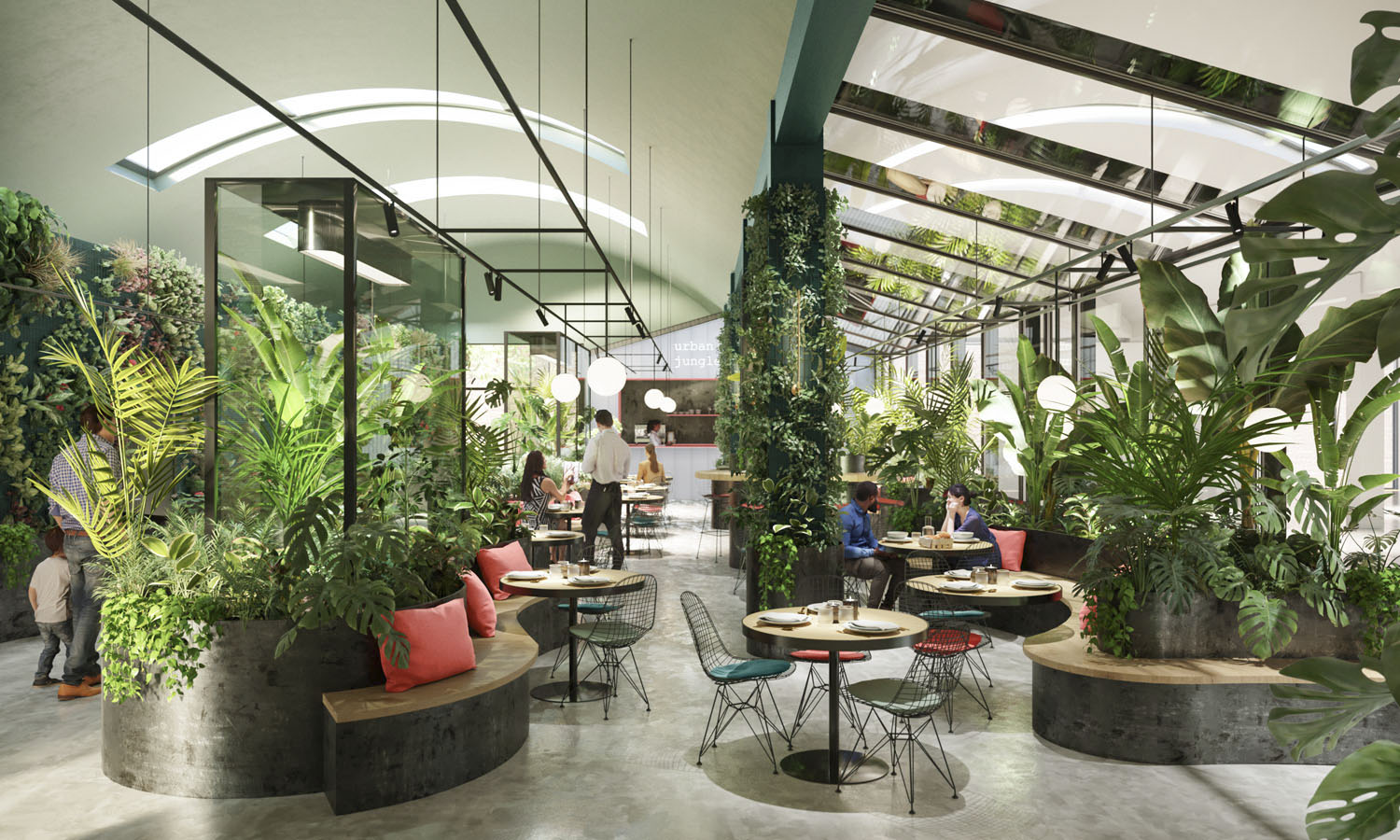
Proposed project for an Air Factory in the Mercato Coperto, Macrolotto Zero, Prato | rendering: Pnat
In Prato, Mancuso and his team at PNAT, a spin-off of the University of Florence’s plant neurobiology lab and partner in the project, will build the largest green air filter in history in the ex-warehouses of Macrolotto Zero, a mixed-purpose area that is being transformed through a larger project of urban regeneration called “Macrolotto Zero Creative District.”
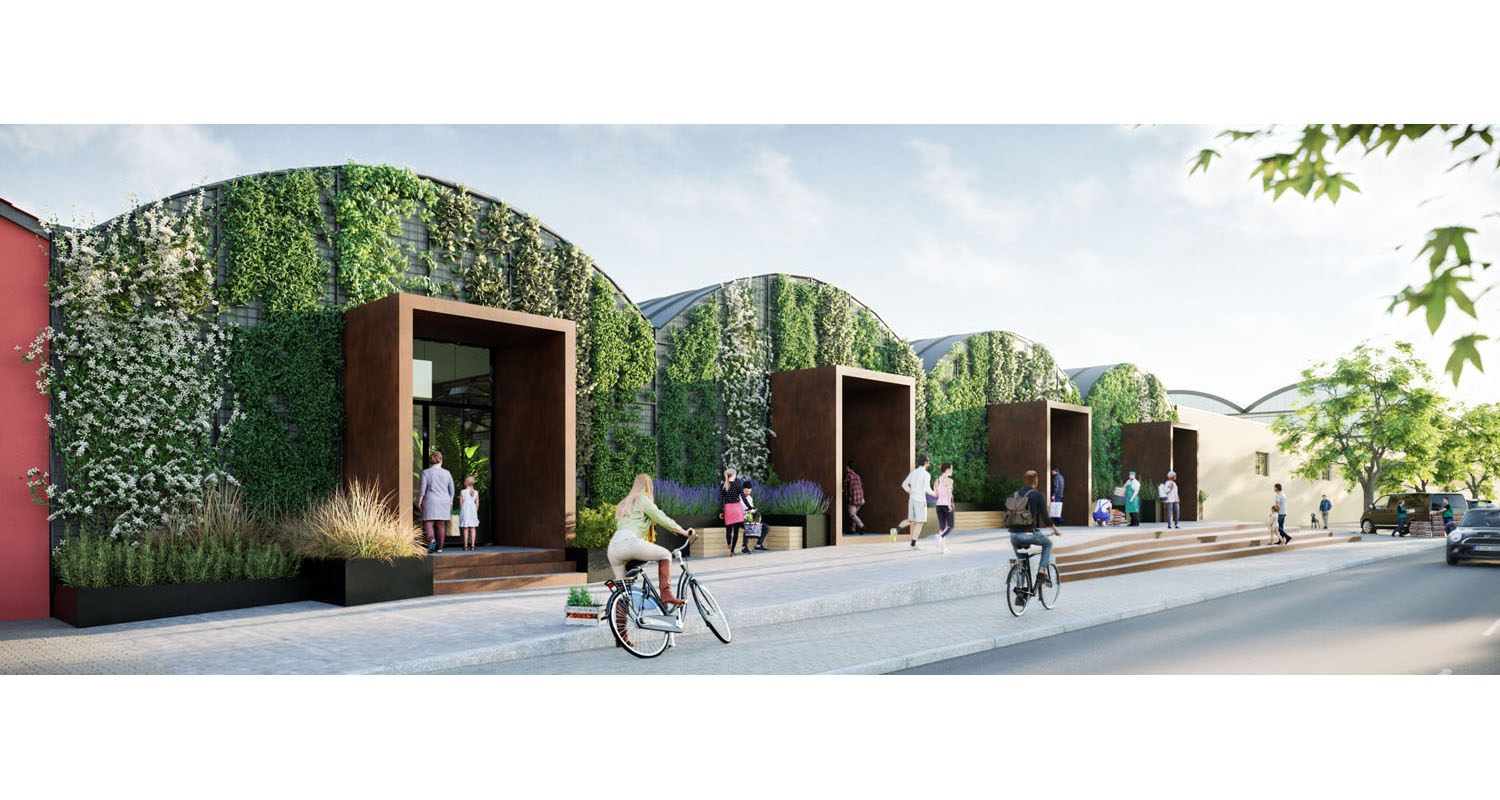
Exterior of the new Mercato Coperto, Macrolotto Zero, Prato | Rendering: Pnat
After worldwide recognition in Milan with the “Bosco Verticale” (Vertical Forest), newly constructed residential towers whose vegetation compose the equivalent of 30,000 square meters of forest, Stefano Boeri turns his attention to the conversion of an extant “glass box” office building into a vertical green space with his project for the headquarters of Estra, the energy company in Prato.
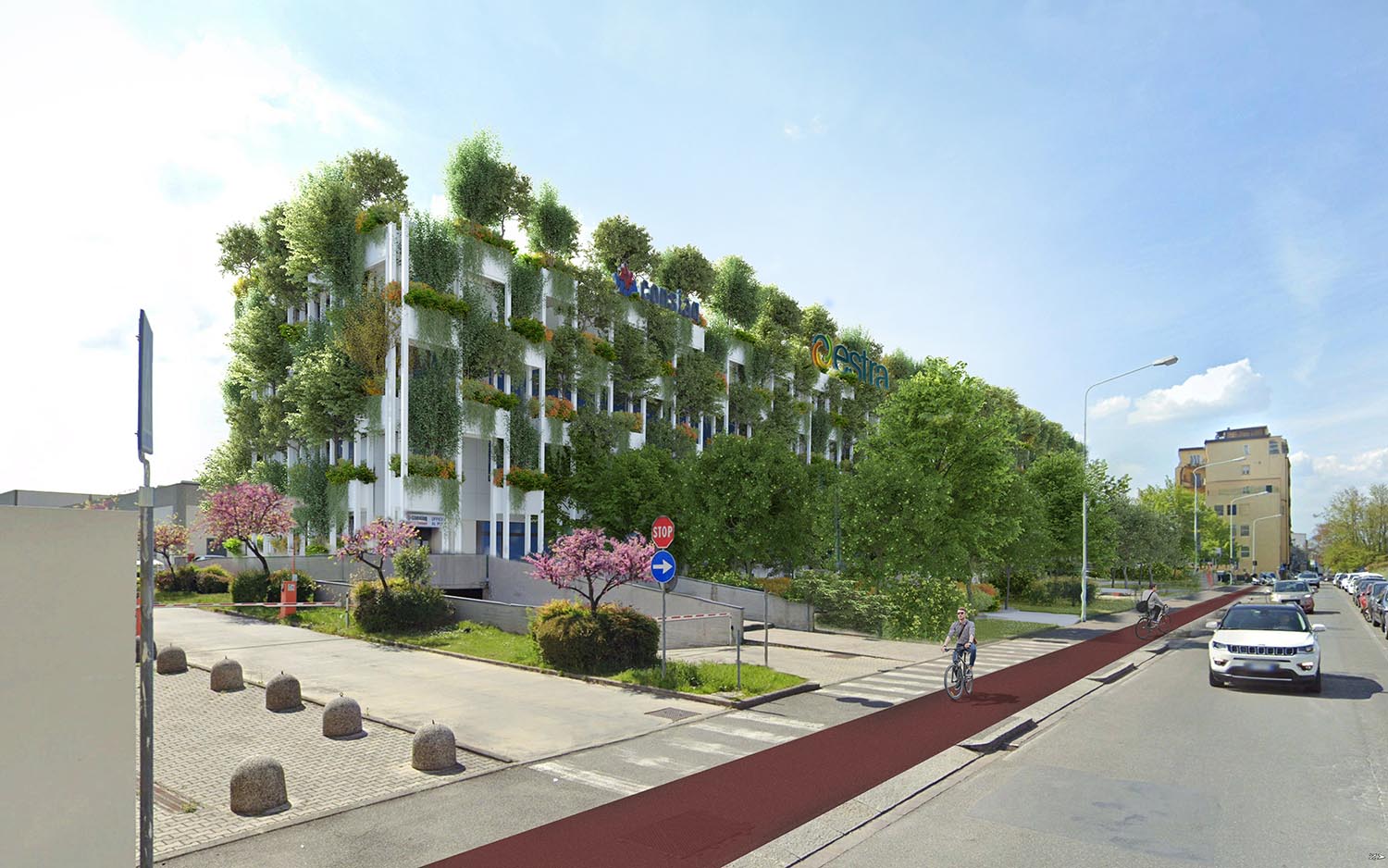
Prato’s Estra building becomes a vertical garden in this rendering by Stefano Boeri Architects
“We wanted to create a situation of maximum acceleration and intensification of green surfaces, both inside and outside of extant structures,” says Boeri of Prato Urban Jungle. The extensive renderings for the Estra building represent a vision of potential for this and other buildings like it; the actual implementation of the design will be decided through co-creation with citizens and stakeholders, who will play an active role in deciding which sections to implement first with budget from the current project.
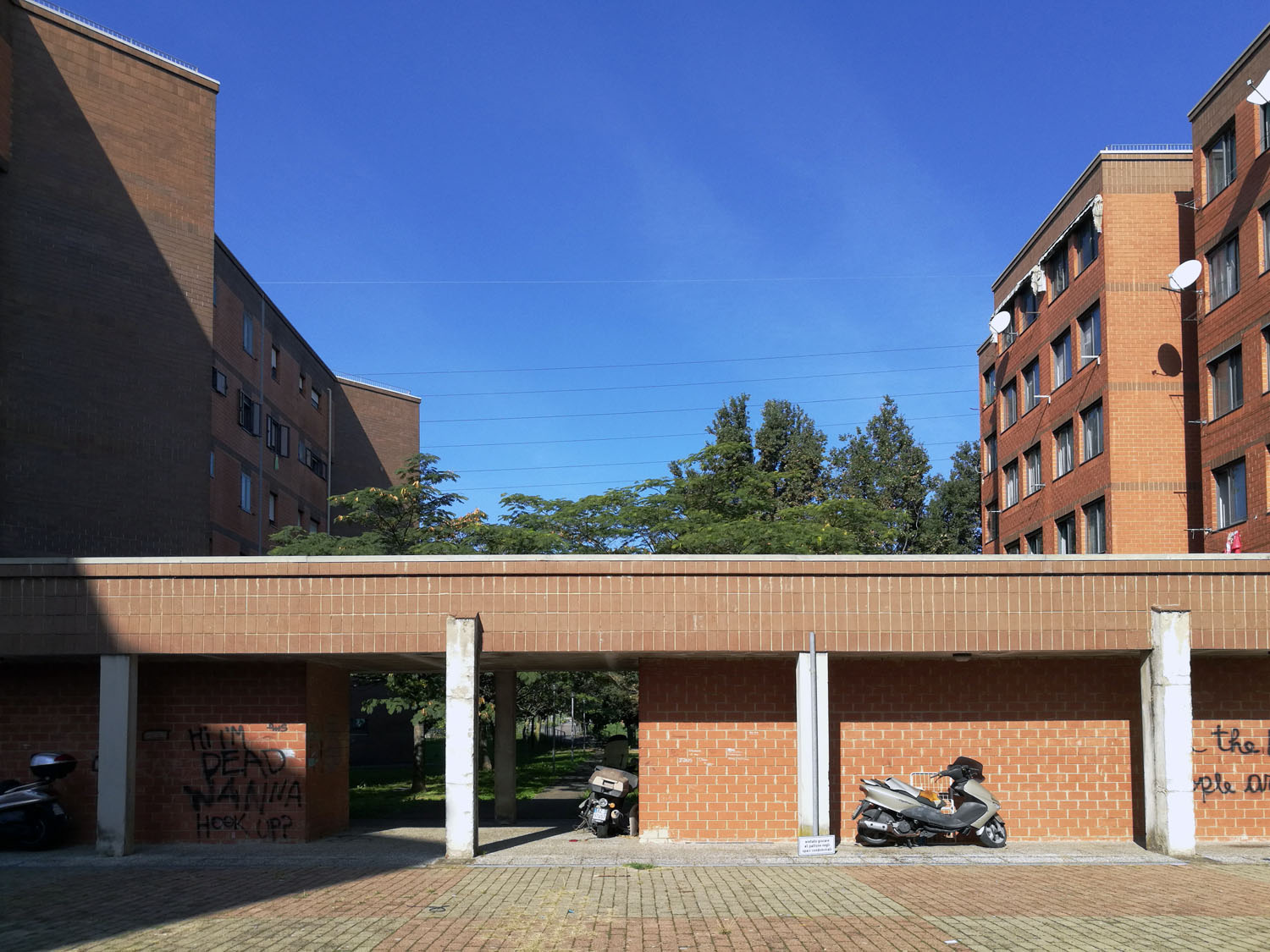
Current state of social housing, San Giusto area of Prato
A second area of intervention on which Boeri and Mancuso’s teams collaborated involves high density social housing in the San Giusto area of Prato, that, when it was developed in 1986, was innovative by prioritizing low-energy systems and surrounding green areas, but the effect today is of a stark red brick structure at the edge of a sprawling, empty park. The architect imagines the transformation of this area into a buzzing urban greenhouse, involving local residents in decision-making as well as execution of the project.
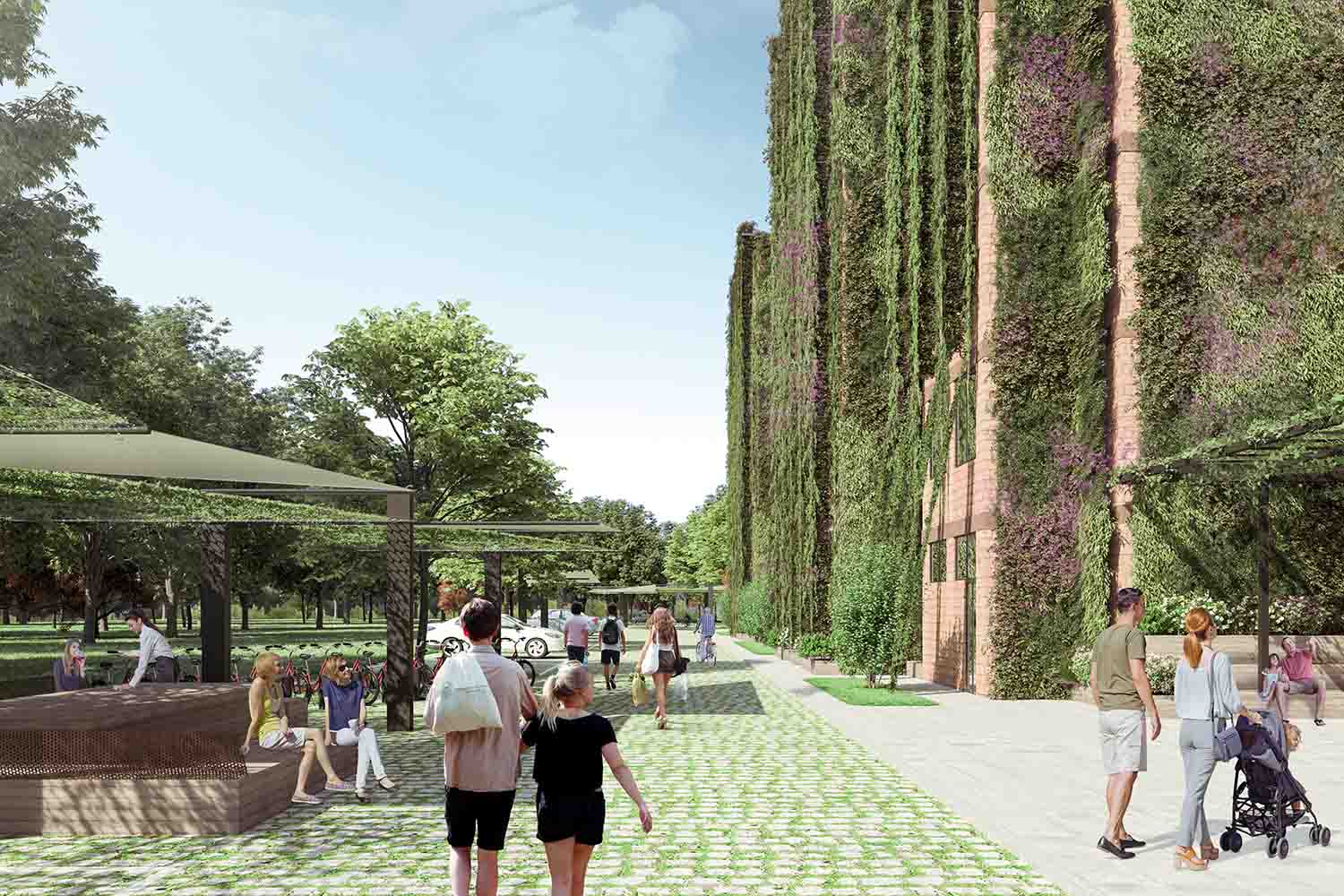
Public housing rethought by Mancuso and Boeri | rendering: Stefano Boeri Architects
Alongside the flashy architectural renderings, which have been receiving the attention of the press, is a social education and co-design base that seeks to involve citizens in adopting a more sustainable lifestyle thanks to interaction with the new green spaces. Finally, the impact of the interventions will be measured through a sophisticated, Tuscan-born system of sensors that will provide open data in real time and allow other cities to replicate the results that Prato hopes to achieve.
City administrators hope that the work carried out in the pilot areas can be broadened beyond single buildings to create whole green corridors that extend parks and gardens through the built-up areas of the city. This is a possibility thanks to the connection of Prato Urban Jungle with other financed projects: for example, Valerio Barberis, superintendent of urban planning, recently announced a 1.8 million euro contribution from the Tuscan Region for “Urban Places,” improving parks and increasing bike lanes in two additional areas of the city. “More green spaces, more green mobility means better quality of life and also health,” declares Barberis, whose ultimate goal is to see the city and its residents rethink consumption, optimize production cycles and increase social inclusion in an ever more circular city.

